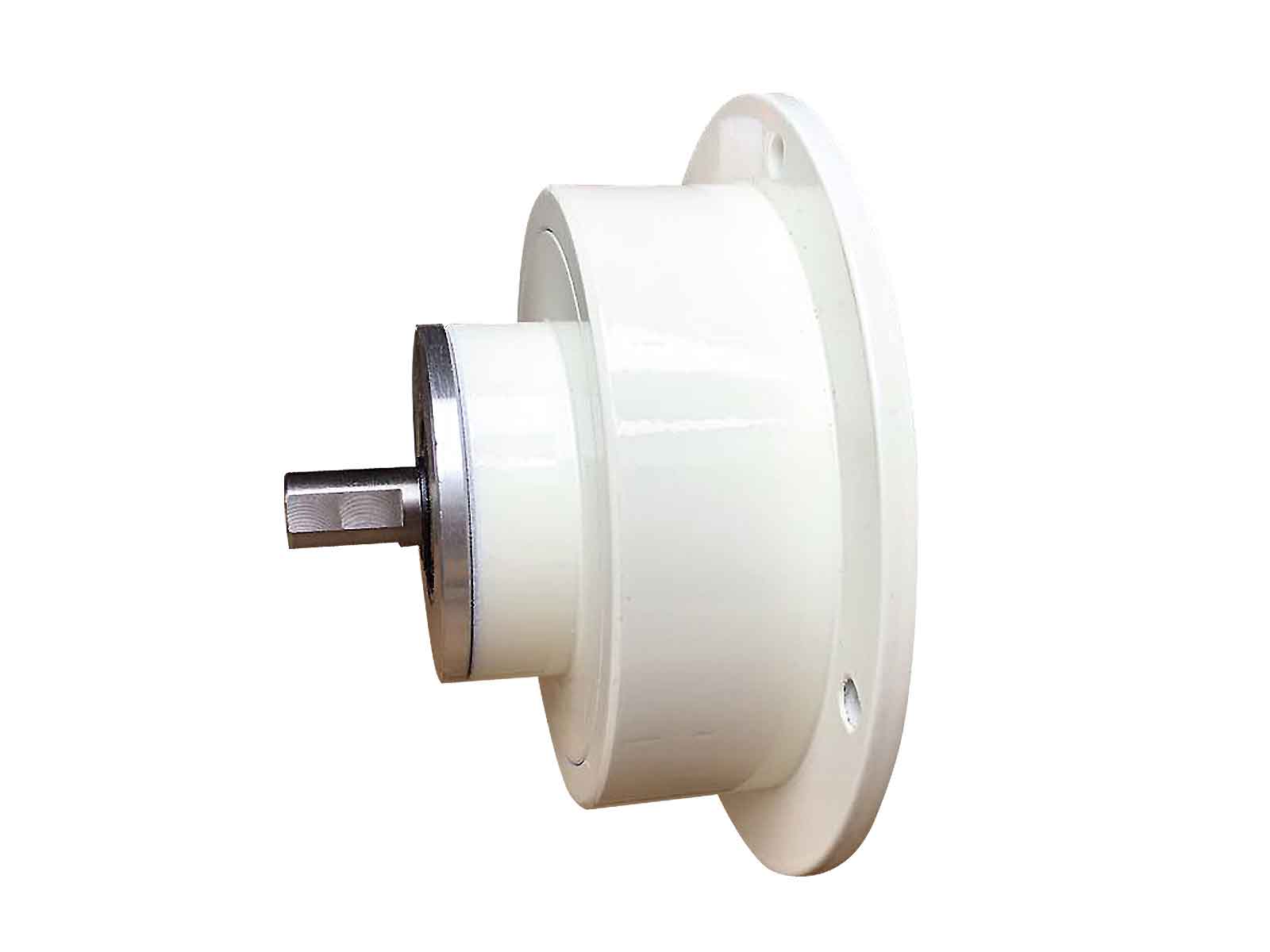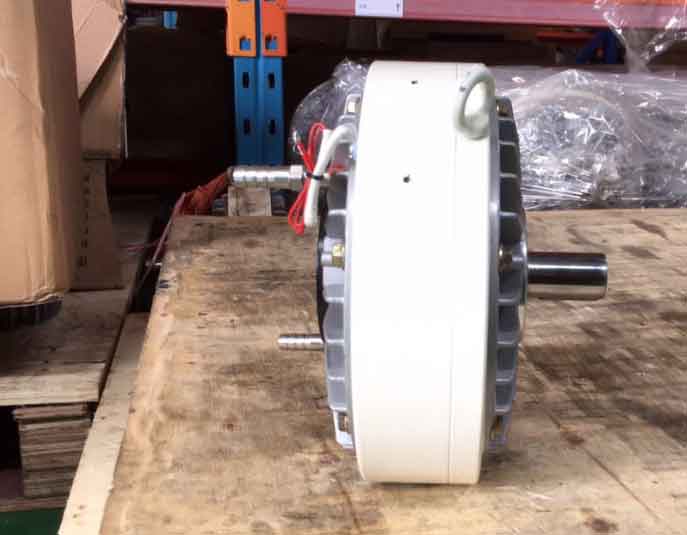A magnetic particle brake is a sophisticated device used to control the speed and tension of various film machines, such as printing presses, laminators, and slitters. Unlike traditional braking systems that rely on friction, magnetic particle brakes utilize the principles of magnetism to provide precise and consistent control.
The core principle behind a magnetic particle brake is the manipulation of finely divided magnetic particles. Inside the brake, there are two main components: a rotor and a stator. The rotor is connected to the input shaft, while the stator is connected to the output shaft of the film machine.
When a current is applied to the stator, it generates a magnetic field that interacts with the magnetic particles inside the brake. These particles align themselves with the magnetic field, creating resistance and transmitting torque from the input shaft to the output shaft. By varying the current applied to the stator, the level of resistance can be precisely controlled, allowing for accurate adjustments in speed and tension.
Top 4 Advantages of using magnetic Particle brakes in thin film machines
- Precise Control : Magnetic particle brakes offer unparalleled precision in controlling the speed and tension of film machines. This level of accuracy ensures consistent and high-quality film production, reducing wastage and enhancing product quality.
- Smooth Operation : Unlike traditional brakes, which can cause abrupt stops and starts, magnetic particle brakes provide smooth and gradual speed adjustments. This eliminates jarring movements that can damage the film or the machinery.
- Maintenance-Friendly : Magnetic particle brakes are designed for durability and require minimal maintenance. Their long lifespan and reliability make them a cost-effective choice for film production facilities.
- Energy Efficiency : These brakes are highly energy-efficient because they only consume electricity when actively adjusting the tension or speed. This reduces overall energy consumption and operational costs.
Top 3 Application of magnetic particle brakes in various film production processing
- Printing Presses : In printing presses, maintaining precise tension on the film is crucial for producing high-quality prints. Magnetic particle brakes ensure consistent tension, resulting in sharp and clear images.
- Laminators : Laminators use magnetic particle brakes to control the speed at which films are laminated together. This prevents wrinkles and bubbles, ensuring a flawless finish.
- Slitters : Slitters are used to cut large rolls of film into smaller, more manageable sizes. Magnetic particle brakes guarantee the accurate and uniform cutting of film rolls.
Conclusion
In the fast-paced world of film production, precision, and control are paramount. Magnetic particle brakes have emerged as a game-changing technology, revolutionizing the way film machines operate. Their ability to provide precise control, smooth operation, and energy efficiency has made them an indispensable tool in the film production industry. As technology continues to advance, magnetic particle brakes are likely to play an even more significant role in shaping the future of film production, ensuring that every frame is perfect, and every reel is a masterpiece.

